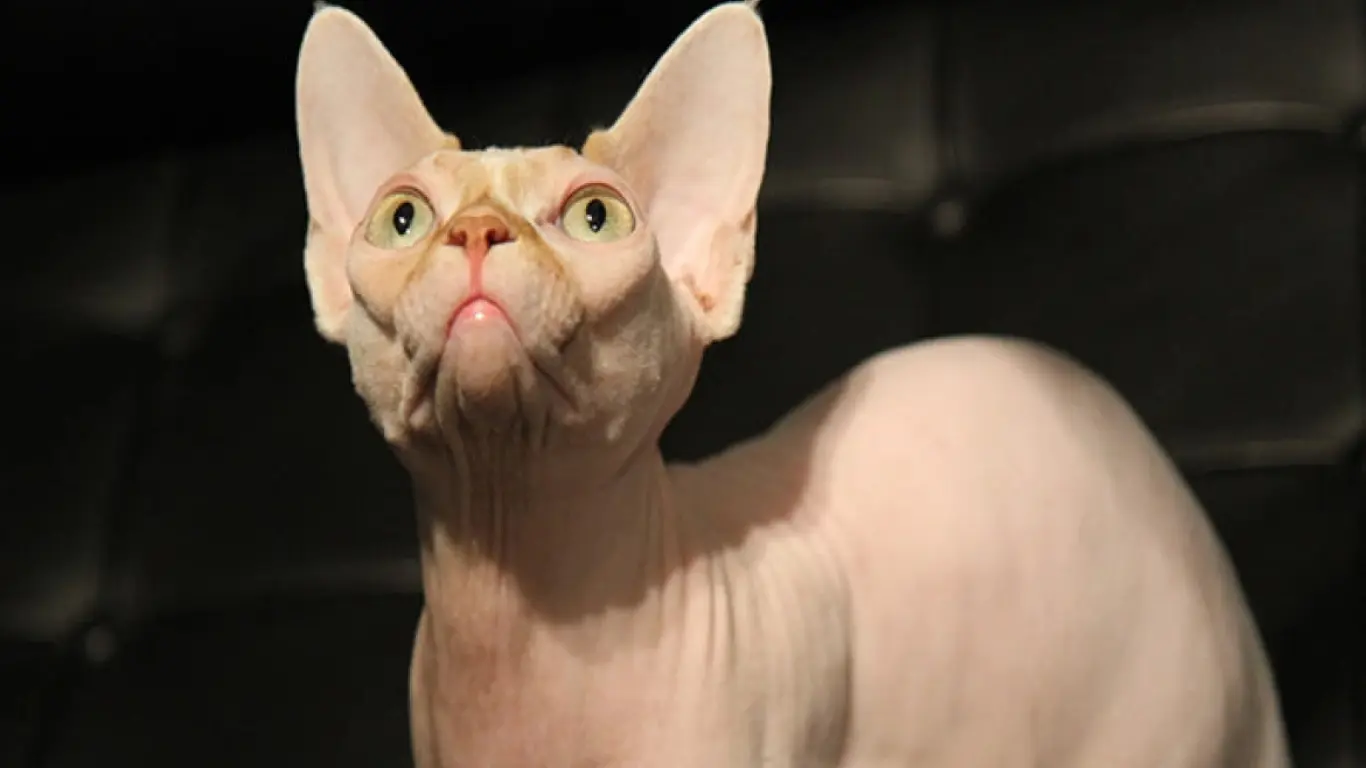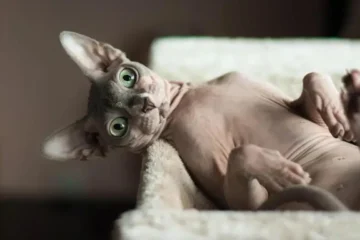Sphynx cats are undeniably unique. Their wrinkled skin and hairless bodies make them stand out from other cat breeds. If you’ve ever seen a sphynx cat, you probably wondered why they look the way they do. What’s with all those wrinkles? Why don’t they have fur like most other cats? These questions might seem simple, but the answers are fascinating.
In this article, we’ll explore the mysteries behind the sphynx cat’s wrinkly appearance and dive deep into the reasons behind their hairlessness. Whether you’re thinking about getting one of these cats or just curious about their appearance, you’re in the right place. Let’s uncover the secrets of the sphynx cat’s skin and their charming wrinkles.
What Makes Sphynx Cats Wrinkly?
The wrinkled appearance of sphynx cats isn’t just a random feature—it serves a purpose. The lack of fur on their bodies allows their skin to show more folds and wrinkles than what you’d see on a typical cat.
The sphynx breed has a genetic mutation that makes them hairless. This mutation affects their skin and the way it grows. Since they don’t have fur to cover their bodies, the skin’s natural folds and creases are more visible. These wrinkles are especially noticeable around the face, neck, and shoulders.
Genetic Mutation Behind the Wrinkles
Sphynx cats owe their unique appearance to a specific genetic mutation. This mutation causes them to have little to no fur. However, this gene doesn’t just remove hair—it also affects the elasticity of the skin. Without fur, their skin is exposed, and the folds and wrinkles become more prominent.
In most other cats, fur covers the skin tightly, so you don’t see as many wrinkles. But in sphynx cats, the absence of this fur allows the skin to be more visible and, therefore, wrinkly.
Wrinkles for Protection
Believe it or not, the wrinkles on a sphynx cat’s skin serve a protective function. In the wild, animals with fur rely on their coats for protection from the elements. Since sphynx cats don’t have this luxury, their skin wrinkles help them stay safe.
The folds in their skin trap body heat, which helps keep them warm. They don’t have a thick fur coat to regulate their body temperature, so the wrinkles act as tiny blankets, maintaining warmth. This is especially important since sphynx cats are more prone to feeling cold.
Why Are Sphynx Cats Hairless?
Now that we know why they’re wrinkly, let’s talk about their hairlessness. Sphynx cats are known for their lack of fur, and this characteristic is the result of a naturally occurring genetic mutation.
This mutation causes the cat’s hair follicles to produce very little hair. Some sphynx cats might have a very fine layer of fuzz, but most are completely bald. Unlike other breeds that have thick, protective fur, sphynx cats rely on their skin for protection.
Skin Care for Sphynx Cats
The lack of fur and the presence of wrinkles mean that sphynx cats need special skin care. Since they don’t have fur to absorb natural oils, their skin can become oily. Regular baths are a must for these cats to prevent the buildup of oils, dirt, and bacteria.
Additionally, their wrinkles need to be cleaned thoroughly. If the folds in their skin aren’t cleaned properly, it can lead to infections or irritation. Owners of sphynx cats need to pay extra attention to their cat’s hygiene to keep them healthy and comfortable.
Wrinkles and Warmth: A Unique Combination

The wrinkles and hairlessness of sphynx cats work together to help them regulate their body temperature. Unlike most cats, who rely on fur to stay warm, sphynx cats have to rely on their wrinkles.
These folds trap body heat, acting like an extra layer of insulation. Even though they might feel cold to the touch, their bodies are working hard to stay warm.
Personality That Matches Their Appearance
Sphynx cats are known for their affectionate and social nature. Their personalities are as unique as their appearance. They love attention and enjoy spending time with their human companions. Many people describe sphynx cats as being “dog-like” in their loyalty and affection.
Because they don’t have fur, sphynx cats are also known for being more physically affectionate. They love to snuggle, not just for attention, but also because they enjoy the warmth of their human’s body.
Sphynx Cats and Sun Protection
Because of their lack of fur, sphynx cats need protection from the sun. Just like humans, their skin can get sunburned if they’re exposed to direct sunlight for too long.
Owners of sphynx cats should be mindful of where their cats spend time. If they’re outdoors, it’s best to keep them in shaded areas or apply pet-safe sunscreen to protect their delicate skin.
Are Sphynx Cats Hypoallergenic?
A common question about sphynx cats is whether they’re hypoallergenic. While they don’t have fur, sphynx cats aren’t completely hypoallergenic. This is because cat allergies are often triggered by a protein found in the cat’s saliva, not just their fur.
Since sphynx cats groom themselves, just like any other cat, this protein can still be present on their skin. However, some people with mild cat allergies may find that sphynx cats cause fewer reactions than other breeds.
Why Sphynx Cats Are So Popular
The unique look of sphynx cats makes them highly sought after by cat lovers. Their wrinkled skin, lack of fur, and affectionate personalities make them stand out from other breeds. Many people are drawn to their exotic appearance and loving nature.
Sphynx cats have become a favorite among those looking for a low-shedding pet. Since they don’t have fur, you won’t find cat hair all over your house. This makes them an attractive option for people who prefer a cleaner, low-maintenance environment.
Health Considerations for Sphynx Cats
Sphynx cats, while unique and captivating, do require special attention to their health. Their lack of fur and exposed skin makes them prone to certain conditions. Owners should be aware of the following:
- Skin infections: The folds in their skin can trap dirt and bacteria, leading to infections if not cleaned regularly.
- Temperature sensitivity: Without fur, sphynx cats are sensitive to extreme temperatures. They may need extra warmth during colder months.
- Sunburn: As mentioned earlier, their exposed skin is vulnerable to sunburn, so it’s important to protect them from direct sunlight.
The Cost of Owning a Sphynx Cat

Sphynx cats tend to be more expensive than other breeds due to their unique characteristics. Prices for sphynx kittens can range from $1,500 to $3,000 or more, depending on the breeder and the cat’s lineage.
In addition to the upfront cost, sphynx cats require ongoing expenses for skincare, grooming, and vet visits. Owners need to be prepared for the financial commitment that comes with caring for these special cats.
Sphynx Cats: A Breed Apart
Sphynx cats are truly a breed apart. Their wrinkled skin, lack of fur, and affectionate nature make them stand out in the feline world. While they may require extra care, their unique appearance and loving personalities make it all worthwhile for those who choose to bring a sphynx into their home.
Whether you’re attracted to their looks or their loyal, affectionate nature, sphynx cats have a way of winning over the hearts of those who meet them. Now that you know why sphynx cats are so wrinkly, you can appreciate the beauty of this extraordinary breed even more.
Conclusion
Sphynx cats are more than just their appearance. Their wrinkles, hairlessness, and affectionate personalities make them one of the most unique cat breeds out there. While their care may require a bit more effort, sphynx cats offer endless love and companionship in return.
So, if you’ve ever asked, “Why are sphynx cats so wrinkly?”—now you know! Their wrinkles are a part of what makes them so special, serving both functional and aesthetic purposes. They’re not just wrinkly for no reason; their wrinkles play a vital role in helping them stay warm and healthy.
If you’re considering adding a sphynx cat to your family, be prepared for a loyal, loving companion with a look unlike any other.




